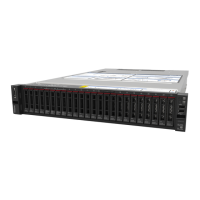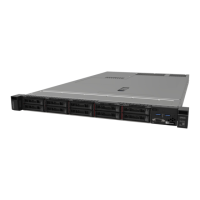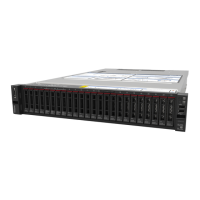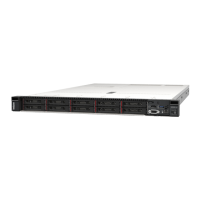Memory configuration
Memory performance depends on several variables, such as memory mode, memory speed, memory ranks,
memory population and processor.
More information about optimizing memory performance and configuring memory is available at the Lenovo
Press website:
https://lenovopress.com/servers/options/memory
In addition, you can take advantage of a memory configurator, which is available at the following site:
http://1config.lenovo.com/#/memory_configuration
For specific information about the required installation order of memory modules in your server based on the
system configuration and memory mode that you are implementing, see
the ThinkSystem SR250 Memory
Population Reference
.
RAID configuration
Using a Redundant Array of Independent Disks (RAID) to store data remains one of the most common and
cost-efficient methods to increase server's storage performance, availability, and capacity.
RAID increases performance by allowing multiple drives to process I/O requests simultaneously. RAID can
also prevent data loss in case of a drive failure by reconstructing (or rebuilding) the missing data from the
failed drive using the data from the remaining drives.
RAID array (also known as RAID drive group) is a group of multiple physical drives that uses a certain
common method to distribute data across the drives. A virtual drive (also known as virtual disk or logical
drive) is a partition in the drive group that is made up of contiguous data segments on the drives. Virtual drive
is presented up to the host operating system as a physical disk that can be partitioned to create OS logical
drives or volumes.
An introduction to RAID is available at the following Lenovo Press website:
https://lenovopress.com/lp0578-lenovo-raid-introduction
Detailed information about RAID management tools and resources is available at the following Lenovo Press
website:
https://lenovopress.com/lp0579-lenovo-raid-management-tools-and-resources
Deploy the operating system
Several options are available to deploy an operating system on the server.
Available operating systems
• Microsoft Windows Server
• VMware ESXi
• Red Hat Enterprise Linux
• SUSE Linux Enterprise Server
Complete list of available operating systems:
https://lenovopress.com/osig.
Chapter 4. System configuration 87

